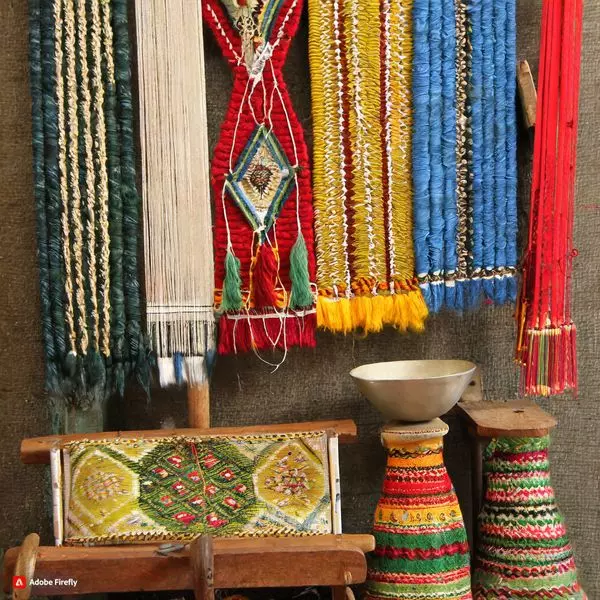
Image Credits: Adobe Firefly
Woven Elegance: Celebrating The Rich Legacy Of Handloom
Writer: Tanya Chaturvedi
As a dedicated content writer, I thrive on the art of storytelling through various media forms. My passion lies in creating engaging, informative and visually captivating content that resonates with audience across platforms.
India, 18 Oct 2023 11:29 AM GMT
Editor : Ankita Singh |
A literature lover who likes delving deeper into a wide range of societal issues and expresses her opinions about the same. Keeps looking for best-read recommendations while enjoying her coffee and tea.
Creatives : Tanya Chaturvedi
As a dedicated content writer, I thrive on the art of storytelling through various media forms. My passion lies in creating engaging, informative and visually captivating content that resonates with audience across platforms.
India, a land rich in cultural heritage and tradition, boasts a vibrant tapestry of handloom fabrics that have woven their way into the nation's history.
India, a land rich in cultural heritage and tradition, boasts a vibrant tapestry of handloom fabrics that have woven their way into the nation's history. From the regal Paithani sarees of Maharashtra to the exquisite Kalamkari works of Andhra Pradesh, the diversity and intricacy of India's handloom industry have left an indelible mark on the global textile landscape.
Historically, the handloom industry in India has been traced back to the ancient Indus Valley civilization, flourishing until the colonial era, when its prominence was diminished. However, recent efforts by the Indian government have revitalized the handloom sector, aiming to reinvigorate the traditional crafts and empower local artisans.
Delving into the varied and exquisite handloom treasures of India, we uncover the distinct stories behind some of the nation's most celebrated fabrics.
Paithani, renowned as the queen of Maharashtrian sarees, is a symbol of elegance and tradition, reflecting the opulence of the Maratha empire. With its intricate silk weaving and characteristic peacock motifs, Paithani remains an integral part of Maharashtra's cultural identity.
Venturing to Gujarat, we encounter the mesmerizing Bandhani sarees, known for their vibrant colors and meticulous hand-dyed patterns. Woven with over 4000 knots by the skilled Katri community, these sarees epitomize the dedication and artistry embedded in India's handloom legacy.
In the coastal paradise of Goa, the traditional Kunbi saree, characterized by its sturdy weave and vivid red hues, serves as a testament to the resilience and simplicity of Goan culture, embodying the essence of the region's indigenous roots.
Traveling to the lush valleys of Assam, we witness the allure of Muga Silk, famed for its lustrous finish and royal heritage, entwined with the ancient history of the Ahom dynasty. The intricately crafted Muga saree represents the timeless elegance and craftsmanship of the northeastern region.
Heading north to Himachal Pradesh, the enchanting Kullu Shawls, adorned with geometric patterns, offer not only a visual delight but also warmth and comfort, making them an essential part of the local cultural fabric.
The southern state of Karnataka beckons with its renowned Mysore Silk, renowned for its soft texture and regal appeal, embodying the essence of luxury and finesse deeply ingrained in Karnataka's heritage.
Journeying further, we encounter the enchanting Kalamkari sarees of Andhra Pradesh, exemplifying the epitome of handcrafted elegance and sophistication, with each piece narrating intricate tales and motifs drawn by the skilled artisans.
Finally, we arrive at Madhya Pradesh, where the elegant Chanderi sarees, known for their delicate texture and golden zari work, pay homage to a legacy dating back to ancient times, intertwining myth and history seamlessly.
Despite the advent of power looms, the resurgence of India's handloom industry serves as a testament to the resilience of its artisans and the enduring legacy of a tradition that stood the test of time. As the nation continues to celebrate its rich textile heritage, the revival of handlooms stands as a testament to India's unwavering commitment to preserving its cultural roots and fostering the craft that defines its identity.
Also Read: SC Denies Adoption Rights For Queer Couples
 All section
All section














